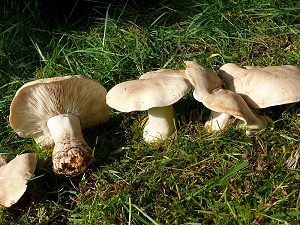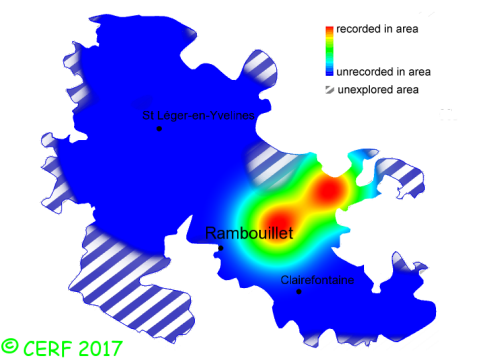| Calocybe gambosa (Fr.:Fr.) Donk |
|
|
|
|
|
|
The cap is whitish. The cap surface is smooth, not viscid nor sticky. The flesh is white, unchanging; its taste is mealy; the odour is mealy; its texture is fibrous. The gills are white, emarginate, crowded . The spore print is white. This species is saprophytic. It grows on the ground, on a rather calcareous soil. The fruiting period takes place from March to September.
Chemical tests : none. Distinctive features : white to cream, compact; strong odour of meal; grows mostly in spring; in grassy areas: gardens, parks, wood edges; in fairy rings Calocybe gambosa is rare and localised in the forest of Rambouillet, and is frequent, more generally speaking . | ||
|
page updated on 14/01/18

